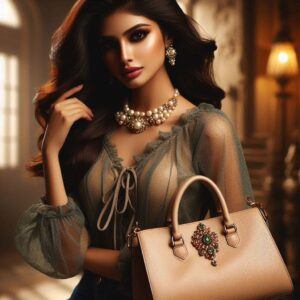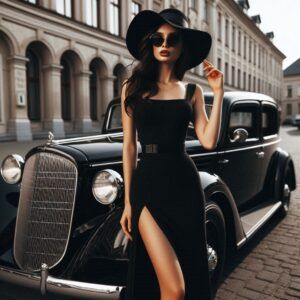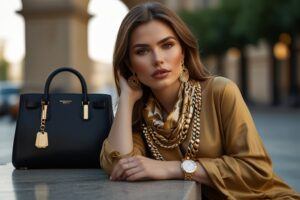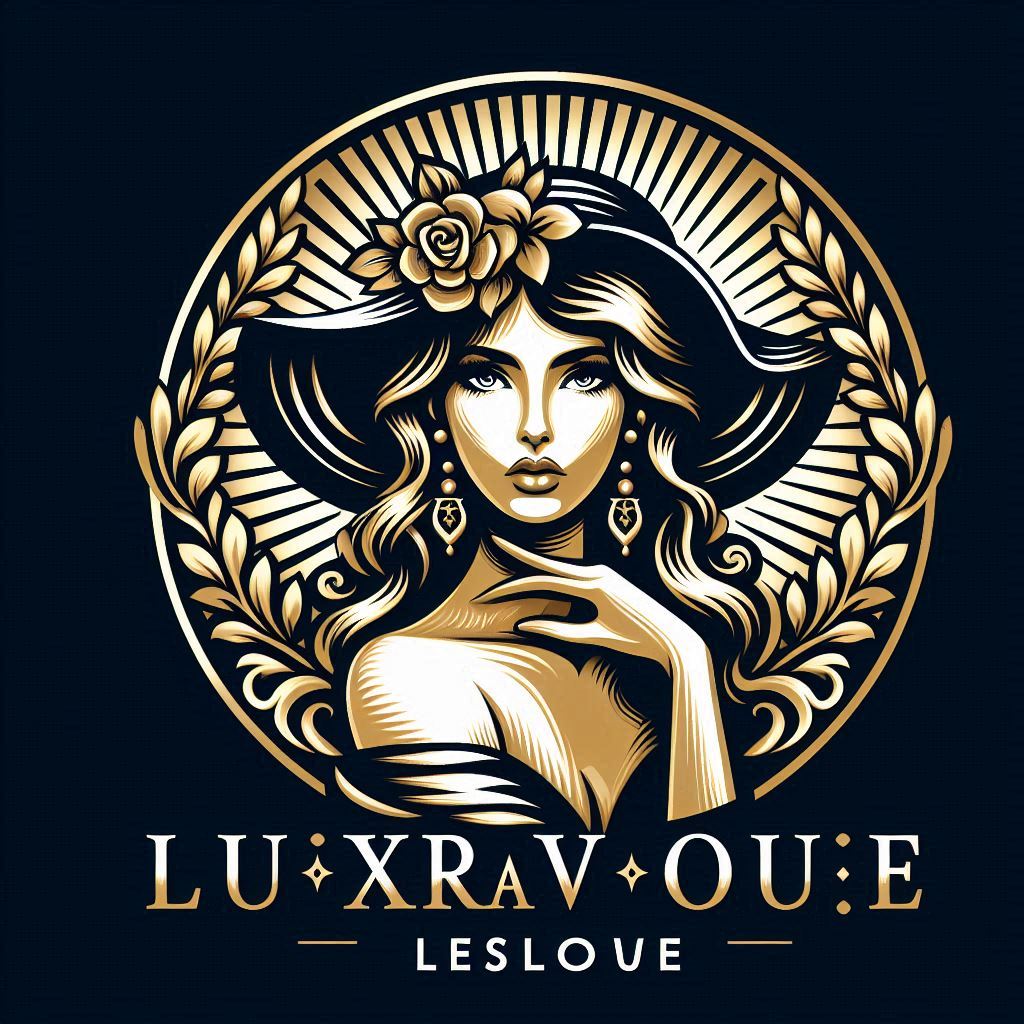
- I understand the intrigue that luxury fashion holds for so many of us. The very word ‘luxury’ suggests a world of exclusivity, high-quality craftsmanship, and a legacy of style that transcends the ordinary. But what exactly is luxury fashion, and why does it captivate us so?
- Luxury fashion isn’t just about lofty price tags; it has roots deeply embedded in history. Over the centuries, craftsmanship, materials, and brand heritage have defined the luxuriousness of a garment or accessory. Names like Chanel, Louis Vuitton, and Hermes carry stories of tradition and unparalleled quality.
- These fashion houses were built on foundations of innovation, tailoring, and an obsessive attention to detail that set them apart from the rest.
In many ways, they serve as cultural landmarks, influencing not only what we wear but how we define beauty and prestige in society. - Psychologically, luxury items provide more than just utility. They convey status, offer personal gratification, and can be symbolic of personal achievements. Our attraction to these items isn’t just about the physical product but about the emotions and identity that these pieces signify.
- Wearing luxury often evokes confidence, serving as a quiet yet powerful form of self-expression.
It’s not uncommon for people to save for months to purchase a single item — not merely for ownership, but for the emotional value it holds. - It’s essential to recognize that luxury fashion isn’t static. The tastes, designs, and perceptions are continually evolving, shaped by cultural shifts and technology. Today, luxury extends beyond the material and into the experience — the service, the purchase journey, and the exclusivity.
- From immersive flagship stores to personalized shopping assistants, the luxury experience is crafted to feel bespoke and memorable. Even digital platforms are evolving, offering virtual fashion shows and exclusive online drops that cater to a younger, tech-savvy clientele.
- But perhaps most importantly, luxury fashion is about personal style. No matter how expensive an item may be, its real value comes from how it aligns with your taste and how you integrate it into your wardrobe. And this naturally leads to the question: How do you build a collection of luxury items that aren’t just prestigious, but are also a reflection of you?
Building a Timeless Luxury Wardrobe

- Creating a wardrobe that whispers sophistication and timeless elegance starts with selecting a few high-quality investment pieces. These are the cornerstones of luxury attire that resist the fast-paced cycle of fashion trends. When you are building such a collection, consider these points to ensure that each acquisition stands the test of time.
- Think of your wardrobe as a curated gallery—each piece should serve a purpose and bring aesthetic harmony to the overall collection.
- First things first, let’s talk key pieces. Every wardrobe benefits from a well-tailored blazer, a designer dress with a classic cut, and the quintessential leather handbag. These items provide a versatile base to build upon. They’re the types that get better with age, much like a fine wine, and work well for a myriad of occasions.
- Luxury shoes, like a pair of handcrafted leather boots or classic stilettos, also deserve a spot in your capsule collection. These foundational items are not only elegant but also practical, making them ideal for both formal and everyday wear.
- Choosing fabrics and materials is fundamental in luxury fashion. It’s not just about aesthetics; it’s also about durability and feel. Opt for natural fibers like silk, cashmere, and high-grade cotton. They offer unparalleled comfort and longevity, not to mention, they maintain their allure over time.
- Synthetic materials rarely age well, while natural fibers tend to retain their quality and appearance through years of use. Don’t hesitate to explore newer, sustainable luxury textiles such as organic bamboo or Tencel, which offer both eco-friendliness and high comfort.
- Though luxury items are a significant investment, their care doesn’t need to be costly or complicated. Regular maintenance can be simple, like using proper hangers for your suits and dresses, or brushing your wool coats with a fabric brush. Occasionally, a visit to a professional for cleaning or repairs may be necessary, but that’s preserving value for items that last years, if not decades.
- Storage also matters—invest in breathable garment bags and cedarwood blocks to preserve fabric quality and deter pests.
It’s these thoughtful practices that transform luxury items into heirlooms. - When incorporating luxury items into your wardrobe, balance is key. While classic staples serve as the foundation, adding a few on-trend items can refresh your style each season. A statement belt or a vibrant scarf can give new life to your investment pieces and keep your look current without losing that timeless appeal.
- Accessories like sunglasses or hats can also help update your look while maintaining the elegant tone set by your wardrobe’s core pieces. And remember, luxury isn’t about owning everything—it’s about owning the right things.
- To concisely sum it up, the essence of assembling a luxury wardrobe is in choosing items that offer versatility, quality, and enduring style. Not only do these pieces serve as a testament to your personal taste, but they also prove to be smart financial choices in the long run. Up next, we’ll explore another pivotal element in luxury fashion — the power of accessorizing to elevate your style.
The Art of Accessorizing with High-End Pieces

- Accessories can make or break an outfit. When it comes to luxury fashion, choosing the right statement piece is key to elevating your look. In this section, I will guide you through mastering the art of accessorizing with high-end items.
- Even the simplest outfit—like a plain white shirt and jeans—can be transformed into a chic ensemble with the right accessories.
- The right piece of luxury jewelry or a high-quality watch isn’t just an accessory; it’s an investment. I’ll explain why luxury watches and jewelry hold their value and how they can even become heirloom pieces over time.
- Brands like Rolex, Cartier, and Patek Philippe have a track record of retaining and even increasing in value. Certain jewelry pieces also carry emotional significance, becoming treasured family keepsakes passed down through generations.
- Like any treasured item, luxury accessories require care. I’ll share practical advice on maintaining and storing your high-end pieces to ensure their longevity.
- Avoid exposing them to harsh chemicals or prolonged sunlight, and always store them in a soft-lined box or pouch. Routine checkups by jewelers can prevent stone loss or wear, ensuring your items remain pristine.
- Although they are luxurious, these pieces aren’t limited to being paired with haute couture. I’ll show you effective ways to mix your premium accessories with everyday clothing, creating a blend that’s both sophisticated and accessible.
- For instance, a luxury belt can cinch a simple dress into a runway-ready look, and designer sunglasses can lift a basic outfit into the spotlight.
The trick is subtlety—less is more when it comes to creating an effortlessly elegant effect. - Let’s not forget, knowing when and how to add that luxury touch can transform even the most basic ensemble into a statement-making look.
- For instance, a luxury belt can cinch a simple dress into a runway-ready look, and designer sunglasses can lift a basic outfit into the spotlight.
The trick is subtlety—less is more when it comes to creating an effortlessly elegant effect.
Sustainable Luxury: Embracing Eco-Friendly Fashion Choices

- As we’ve examined the sparkle and appeal of luxury fashion, it’s clear that sustainability is no longer a mere trend but an essential practice. Eco-friendly fashion choices allow you to enjoy luxury with a conscience. Leading luxury brands are increasingly incorporating sustainable methods, and I’ll show you how to support this movement.
- The rise of eco-conscious luxury brands has introduced new criteria for making informed purchases. Look beyond the label—research the brand’s commitment to ethical practices and materials. Are they using organic cotton, recycled fabrics, or renewable resources? These small details speak volumes about their dedication to a sustainable future.
- Brands like Stella McCartney, Gabriela Hearst, and Chloé are pioneering this change by integrating ethics with aesthetics. Transparency in supply chains, cruelty-free practices, and eco-friendly packaging are becoming hallmarks of modern luxury.
- When choosing luxury items, remember to consider their footprint. High-quality pieces not only last longer, they often have a lower impact on the environment over time. My advice is to invest in items that promise longevity, both in style and durability. Prefer craftsmen who value traditional techniques and avoid mass production, thus ensuring lower carbon emissions.
- You can also contribute to a greener planet by supporting the circular economy. Engage in luxury fashion resale platforms to buy pre-owned designer items. This approach not only gives a second life to high-end goods but also mitigates the environmental costs of new production.
- Sites like The RealReal and Vestiaire Collective have made secondhand luxury chic, trusted, and more accessible than ever. This shift also empowers buyers to curate unique collections with historical charm and sustainability at their core.
- To wrap up, remember that your decisions can shape the luxury industry. Luxury can go hand in hand with environmental responsibility, creating a refined wardrobe that stands the test of time—not just in fashion, but in ethical standards too.
- Every luxury choice you make is a vote for the kind of future you want to see in the fashion world. By combining style with substance, you’re not just dressing beautifully—you’re living consciously.
